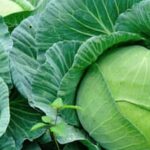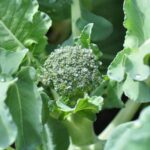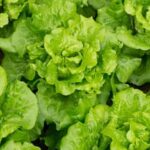Are you looking to start your own vegetable garden and wondering which veggies will give you the most bang for your buck? In this article, we will explore the most productive vegetables for gardening, as well as the benefits of growing your own produce and how to maximize your yield. Whether you’re a seasoned gardener or just starting out, these tips will help you achieve a bountiful harvest in your backyard.
There’s nothing quite like the satisfaction of growing and harvesting your own vegetables. Not only does it provide you with fresh, flavorful produce, but it also allows you to save money and reduce your carbon footprint. By understanding the factors that contribute to a productive vegetable garden and learning about companion planting techniques, you can create a thriving and sustainable food source right in your own backyard.
In this article, we’ll cover everything from the top 5 most productive vegetables for gardening to common mistakes to avoid when tending to your garden. Whether you have limited space or are working with less-than-ideal growing conditions, there are solutions and strategies that can help you make the most of your gardening efforts. So let’s dig in and discover how you can enjoy an abundant harvest from your very own productive vegetable garden.
Benefits of Growing Your Own Vegetables
There are numerous benefits to growing your own vegetables, ranging from health and environmental advantages to personal satisfaction.
Health Benefits
One of the main advantages of growing your own vegetables is the health benefits it provides. Freshly harvested vegetables are packed with essential nutrients that contribute to a healthy diet. By growing your own produce, you have control over what goes into the soil and onto your plants, reducing the risk of consuming harmful chemicals often found in commercially grown vegetables.
Environmental Benefits
Another significant benefit of growing your own vegetables is the positive impact it has on the environment. By gardening organically, you contribute to reduced pollution and waste. Additionally, cultivating your own food reduces the carbon footprint associated with transportation and packaging of store-bought produce.
Social and Emotional Benefits
Gardening also offers social and emotional benefits. It can be a therapeutic and stress-relieving activity, helping to foster a sense of tranquility and well-being. Furthermore, growing your own vegetables can create opportunities for community involvement through shared gardening spaces or by sharing excess produce with friends and neighbors.
Factors to Consider for a Productive Vegetable Garden
When planning a productive vegetable garden, there are several key factors that need to be taken into consideration in order to ensure a successful and bountiful harvest. From soil quality to sunlight and spacing, each element plays a crucial role in the overall productivity of your garden.
Soil Quality and Composition
One of the most important factors for a productive vegetable garden is the quality and composition of the soil. Vegetables thrive in well-drained, nutrient-rich soil. Conducting a soil test can help determine the pH levels and any deficiencies that may need to be addressed through the addition of organic matter or specific fertilizers.
Sunlight and Water
Another essential factor for a productive vegetable garden is access to sunlight and water. Most vegetables require at least 6-8 hours of direct sunlight per day, so it’s important to choose a location for your garden that receives adequate sunlight. In addition, regular watering is crucial for healthy plant growth and optimal yield.
Spacing and Planting Layout
Proper spacing and planting layout also play a vital role in the productivity of your vegetable garden. Overcrowding plants can lead to competition for nutrients, restricted airflow, and increased susceptibility to pests and diseases. It’s important to follow recommended spacing guidelines for each type of vegetable to ensure ample room for growth.
By carefully considering these factors – soil quality, sunlight and water, as well as spacing and planting layout – you can set the foundation for a highly productive vegetable garden that yields an abundance of fresh, healthy produce throughout the growing season.
Top 5 Most Productive Vegetables for Gardening
When it comes to starting a vegetable garden, it’s important to choose the right vegetables that will give you the most yield. Whether you are a seasoned gardener or a beginner, selecting the most productive vegetables for gardening can make all the difference in the success of your garden. The following vegetables are known for their high productivity and are great options for any level of gardener.
Here are the top 5 most productive vegetables for gardening:
- Tomatoes: Tomatoes are one of the most popular and productive vegetables for gardening. They can be grown in various climates and soil types, making them versatile and easy to maintain.
- Zucchini: Zucchini is a prolific producer and is known for its abundance of fruits throughout the growing season. With proper care, one zucchini plant can provide an ample supply of this versatile vegetable.
- Green Beans: Green beans are not only productive but also easy to grow. With the right conditions, green bean plants can yield a bountiful harvest in a relatively short amount of time.
- Peppers: Whether it’s bell peppers, chili peppers, or sweet peppers, they are all highly productive when it comes to gardening. With proper care and consistent watering, pepper plants can produce an abundance of flavorful peppers.
- Lettuce: Lettuce is one of the most productive leafy greens that you can grow in your garden. It is fast-growing and can be harvested multiple times throughout the growing season, providing a continuous supply of fresh greens.
These five vegetables are excellent choices for any gardener looking to maximize their garden’s productivity. By selecting these high-yield vegetables and providing them with proper care, you can enjoy a bountiful harvest throughout the entire growing season.
Additionally, it’s essential to consider factors such as climate, soil type, sunlight exposure, and water availability when choosing vegetables for your garden. By taking these factors into account and selecting the right varieties for your specific growing conditions, you’ll set yourself up for success in cultivating a highly productive vegetable garden.
Tips for Maximizing Yield in Your Vegetable Garden
When it comes to maximizing the yield in your vegetable garden, there are several tips and techniques that can help you get the most out of your plants. One of the most important factors to consider is proper spacing. Crowding your plants can lead to competition for nutrients, sunlight, and water, which can ultimately result in smaller yields. Be sure to follow the recommended spacing guidelines for each type of vegetable you are growing to ensure optimal growth and production.
Another important tip for maximizing yield is to regularly fertilize your plants. Using a good quality fertilizer can provide essential nutrients that may be lacking in your soil, leading to healthier, more productive plants. Additionally, implementing a regular watering schedule is crucial for ensuring that your vegetables receive adequate hydration, which is essential for their growth and development.
Furthermore, staying on top of pest and disease control is vital for maximizing yield in your vegetable garden. Inspecting your plants regularly for signs of pest infestation or disease and taking proactive measures to address them can help prevent damage to your crops and ultimately lead to higher yields. Implementing organic pest control methods whenever possible can also help maintain the overall health of your garden.
By following these tips and techniques, you can significantly increase the productivity of your vegetable garden and enjoy a bountiful harvest of some of the most productive vegetables for gardening. With proper care and attention, you can maximize the yield of your garden and reap the rewards of homegrown produce all season long.
Companion Planting for Increased Productivity
Companion planting is a gardening technique in which different plants are grown together to benefit each other in various ways, such as deterring pests, enhancing growth, and improving flavor. By strategically choosing which plants to grow together, you can create a more productive and bountiful vegetable garden. Some of the most productive vegetables for gardening can be grown alongside certain companion plants to increase their yield.
For example, planting tomatoes with basil can improve the flavor of the tomatoes and help repel pests, while growing lettuce with carrots can result in a higher yield for both crops. Additionally, planting marigolds near your vegetable garden can help deter certain pests that may damage your plants. These are just a few examples of how companion planting can contribute to increased productivity in your garden.
Another benefit of companion planting is its ability to maximize space in your garden by intercropping different plants. This allows you to make the most of your available space and grow a wider variety of vegetables, ultimately leading to a more productive harvest. As you plan out your garden layout, consider incorporating companion planting techniques to optimize the productivity of your vegetable garden.
| Companion Plants | Vegetables for Gardening |
|---|---|
| Tomatoes with basil | Tomatoes |
| Lettuce with carrots | Lettuce & Carrots |
| Marigolds | All Vegetables |
Common Mistakes to Avoid for a Productive Vegetable Garden
When it comes to gardening, there are common mistakes that can hinder the productivity of your vegetable garden. Avoiding these mistakes is crucial in ensuring a bountiful harvest. Here are some of the most common mistakes to avoid for a productive vegetable garden:
- Overcrowding: Planting vegetables too closely together can lead to competition for nutrients, water, and sunlight. This can result in stunted growth and smaller yields. Make sure to give each plant enough space to thrive.
- Ignoring soil health: Neglecting the health of your soil can have a significant impact on the productivity of your vegetable garden. It’s important to regularly test and amend your soil to ensure it has the right balance of nutrients for optimal plant growth.
- Not providing adequate support: Some vegetables, such as tomatoes and cucumbers, require support to grow properly. Failing to provide support can lead to damaged plants and reduced yields.
Avoiding these common mistakes will set you on the right path towards a more productive vegetable garden. By giving your plants the space, nutrients, and support they need, you’ll be well on your way to enjoying a bountiful harvest of fresh, homegrown vegetables.
Investing some time in researching how best to maximize yield from your chosen most productive vegetables for gardening will also contribute massively.
How to Harvest and Preserve Your Productive Vegetable Garden
When it comes to having a productive vegetable garden, the harvest and preservation process is just as important as the planting and growing stages. After all the hard work put into cultivating your crops, it’s essential to know how to harvest them at the right time and preserve them properly for future consumption. By following some simple guidelines, you can make the most of your bountiful produce and enjoy them for months to come.
First and foremost, it’s crucial to harvest your vegetables at the peak of their ripeness. This ensures that they are bursting with flavor and nutrients. Some vegetables like tomatoes, peppers, and cucumbers should be picked when they reach full color and size, while others like lettuce and spinach are best harvested when they are young and tender. It’s important to research each vegetable in your garden to know the optimal time for harvesting.
Once you’ve harvested your vegetables, proper preservation techniques will allow you to enjoy them well beyond their typical shelf life. Canning, freezing, dehydrating, and pickling are all effective methods for preserving different types of vegetables. For example, tomatoes can be canned into sauces or salsa, while leafy greens can be frozen for use in soups or smoothies. Understanding the best preservation method for each type of vegetable will ensure minimal waste and maximum enjoyment of your garden’s bounty.
Lastly, staying organized is key when it comes to storing your preserved vegetables. Labeling and dating each item will help you keep track of what you have on hand, making meal planning easier down the line. Finding a suitable storage space that is cool, dark, and dry will also help maintain the quality of your preserved vegetables for an extended period.
| Vegetable | Optimal Harvest Time | Preservation Method |
|---|---|---|
| Tomatoes | Full color and size | Canning into sauces or salsa |
| Lettuce | Youthful stage | Freezing for use in soups or smoothies |
| Cucumbers | Full color and size but before they turn yellow | Pickling or canning in vinegar brine |
Conclusion
In conclusion, growing your own productive vegetable garden can be incredibly rewarding. Not only do you get to enjoy the fresh, delicious flavors of homegrown produce, but you also reap the benefits of a healthier lifestyle and environment. By considering factors such as location, soil quality, and proper care, you can ensure a bountiful harvest of the most productive vegetables for gardening.
The top 5 most productive vegetables for gardening include tomatoes, peppers, cucumbers, zucchini, and lettuce. These versatile and high-yielding plants are perfect for beginners and experienced gardeners alike. By following tips for maximizing yield in your vegetable garden and practicing companion planting for increased productivity, you can further enhance the success of your harvest.
Avoiding common mistakes and learning how to harvest and preserve your productive vegetable garden will help you enjoy the fruits of your labor year-round. Whether it’s through canning, freezing, or storing fresh produce, you can savor the taste of your hard work long after the growing season has ended. So grab your gardening tools and get ready to experience the joy of cultivating some of the most productive vegetables for gardening right in your own backyard.
Frequently Asked Questions
What Is the Most Productive Vegetable to Grow?
The most productive vegetable to grow can vary depending on the specific growing conditions and climate of a particular area. However, in general, tomatoes are often considered one of the most productive vegetables due to their ability to produce a high yield within a relatively small space.
What Vegetables Produce the Highest Yield?
Some of the vegetables that produce the highest yield include zucchini, cucumbers, and peppers. These vegetables are known for their prolific production throughout the growing season, providing a plentiful harvest for gardeners.
Which Vegetables Produce the Most Food?
When it comes to producing the most food, root vegetables such as potatoes and carrots are among the top contenders. These crops are known for their ability to produce a substantial amount of edible food per plant, making them valuable choices for those looking to maximize their food production from their garden or farm.

If you’re looking to get into vegetable gardening, or are just looking for some tips on how to make your current garden better, then you’ve come to the right place! My name is Ethel and I have been gardening for years. In this blog, I’m going to share with you some of my best tips on how to create a successful vegetable garden.





